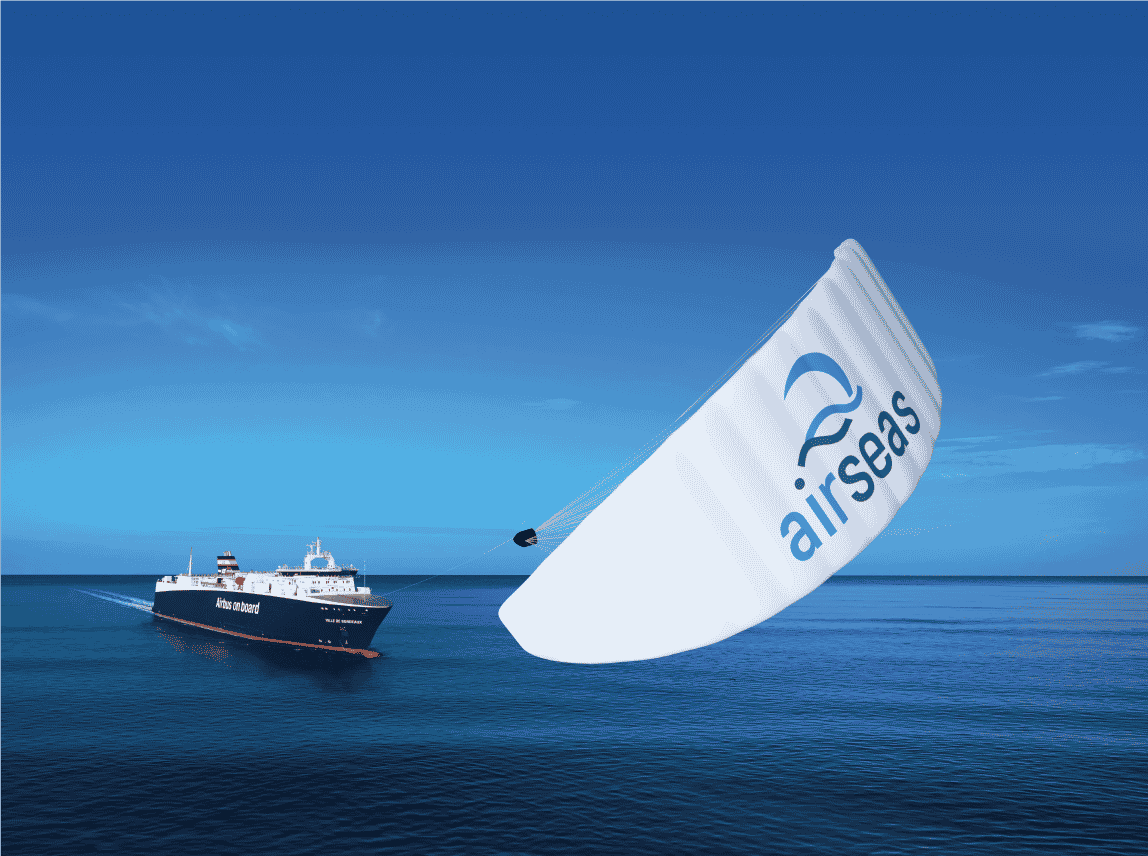
Seawing Project : Traction wing for commercial vessels
AIRBUS currently develops, through its subsidiary Airseas the Seawing technology, which consists of installing an auxiliary traction system (captive flying wing) on ships used for sea freight…

(1) de CO2 in flight.
As fully part of the global aviation decarbonisation strategy (50% reduction in global fleet emissions compared to 2005 in 2050 and climate neutrality by 2060), Airbus has the ambition to develop the first “zero emission commercial aircraft (1)” in the world by 2035 using hydrogen as a mode of propulsion. (1) Zero Emissions of CO2 in flight
Hydrogen could significantly reduce the climate impact of aviation. Hydrogen eliminates in-flight CO2 emissions and can be produced quasi carbon-free. Considering also the non-CO2 emissions and the uncertainty of these effects, the combustion of hydrogen and electric propulsion by fuel cell are the most effective means of reducing the climate impact in flight.
In an unprecedented R&T effort, Airbus presented three ZEROe concepts in September 2020 :
These three ZEROe concepts make it possible to explore a variety of configurations and technologies using hydrogen as a mode of propulsion to replace conventional kerosene. These concepts will make it possible to select the best technologies and the most suitable market segments for this new generation of aircraft. Following this development exercise, an aircraft program will be launched around 2026-2028 for marketing no later than 2035.
To make the hydrogen airplane possible, several technologies are studied and under development such as lightweight cryogenic hydrogen tanks and fuel cell systems; liquid hydrogen (LH2) distribution systems, turbines capable of burning hydrogen with low NOx emissions and the development of efficient ground refueling technologies allowing flow rates comparable to those of kerosene.
on which the project has a significant impact
Scope 3 – Hydrogen-powered aircraft
Avoided Emissions – Hydrogen-powered aircraft
The dissemination of this type of aircraft in existing fleets will make it possible to decarbonise international aviation well beyond air emissions in France, which represent only ca 23.4 MT (2019) of which 4.8 MT for domestic flights against 915 MT for international fleets (2019).
Le passage à l’Hydrogène implique de facto la suppression des émissions de CO2 en opérations.
Une utilisation d’Hydrogène « vert et durable » obtenu à partir d’électricité quasi totalement décarbonée permet de limiter le CO2 « amont » associé à la fabrication de l’H2.
Confidential
2020
Toulouse, Garonne
Confidential at this stage
Aviation decarbonization in accordance with the established roadmap
Development of sustainable mobility offer
Maintaining a competitive and eco-efficient aviation industry
The technologies developed for future hydrogen aircraft will not apply to just one type of aircraft. They will inaugurate an incremental deployment of zero-emission propulsion in various segments of the air transport market.
With the entire aeronautics sector (equipment manufacturers, engine manufacturers, etc.), energy providers, airports, etc. and other potential users (maritime;.) for the setting-up of a supply Hub
christophe.arnold@airbus.com françois.guillaumel@airbus.com

AIRBUS currently develops, through its subsidiary Airseas the Seawing technology, which consists of installing an auxiliary traction system (captive flying wing) on ships used for sea freight…